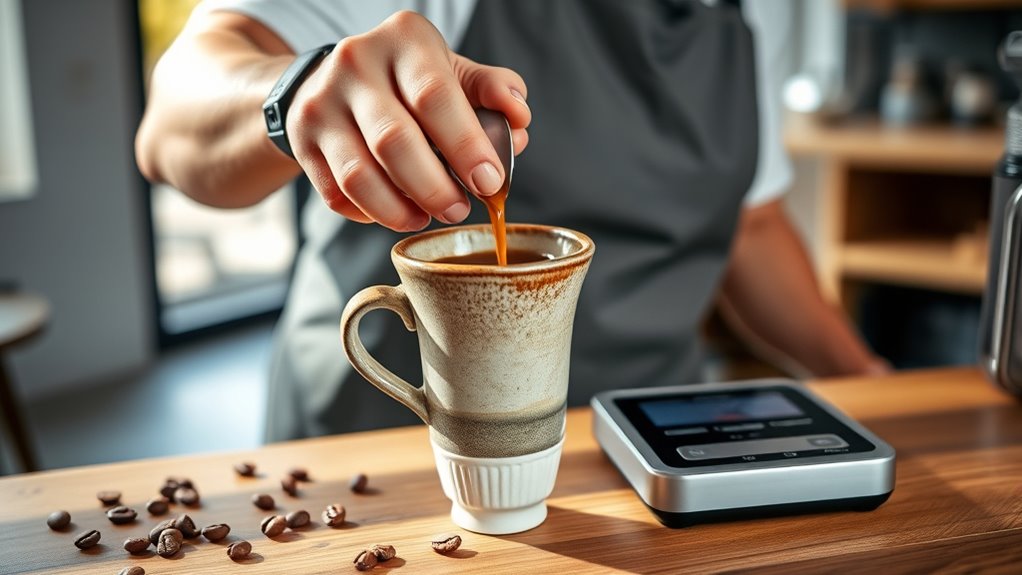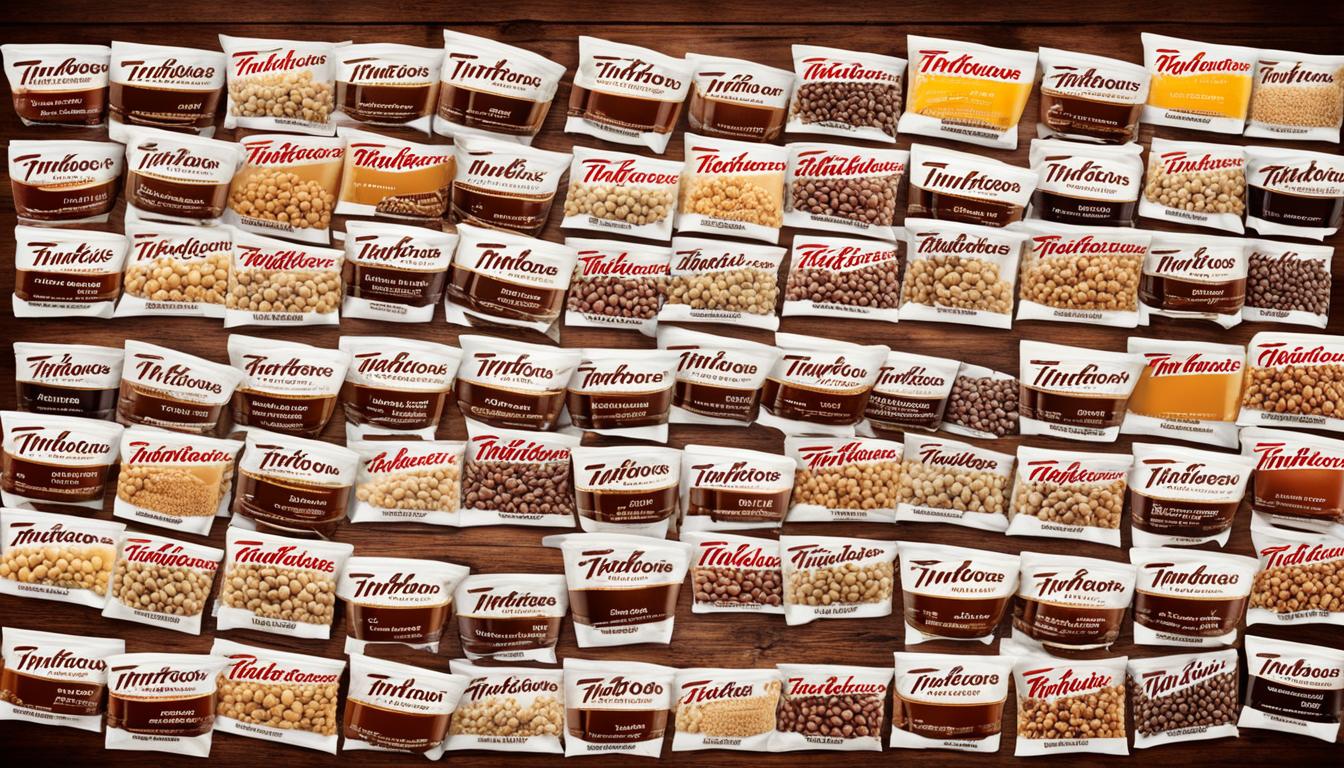The third wave coffee movement elevates your coffee experience by focusing on artisanal craftsmanship, origins, and brewing techniques. It encourages you to explore single origin beans, appreciate flavor nuances, and refine your brewing skills with methods like pour-over or siphon. This shift emphasizes transparency and sustainability, helping you make ethical choices. As you embrace this culture, you’ll discover a richer, more complex world of coffee—if you keep exploring, you’ll uncover even more of its depths.
Key Takeaways
- The Third Wave emphasizes artisanal, high-quality coffee, fostering a culture of appreciation and craftsmanship among connoisseurs.
- Single origin beans and regional flavors enhance the complexity and uniqueness of coffee experiences.
- Innovative brewing methods like pour-over and siphon brewing allow for precise extraction and flavor nuances.
- Knowledge of grind size, roast levels, and profiles is crucial for optimizing taste and brewing excellence.
- Ethical sourcing and sustainability practices empower consumers to support fair trade and environmentally responsible coffee.

You might have noticed that coffee culture has evolved dramatically in recent years, moving beyond simple caffeine fixes to a focus on quality, sustainability, and craftsmanship. This shift marks what’s now called the Third Wave of coffee, where the emphasis is on appreciating coffee as an artisanal product. As a coffee enthusiast, you’re encouraged to explore the nuances of flavor, origin, and brewing techniques that elevate your daily cup. One of the core principles of the Third Wave is the use of single origin beans, which means sourcing coffee from specific farms or regions to highlight unique flavor profiles. By focusing on these beans, roasters and baristas aim to showcase the distinct characteristics that come from particular soil types, climates, and processing methods. You’re encouraged to seek out these beans, because they offer a richer, more complex experience than generic blends.
Brewing innovation is another key aspect of this movement. Traditional methods like drip coffee or French press still have their place, but the Third Wave also pushes the boundaries with new techniques and equipment. You might find yourself experimenting with pour-over, AeroPress, or siphon brewing to extract the most nuanced flavors from your beans. Baristas and home brewers alike are adopting precise temperature controls, grind adjustments, and timing to achieve ideal extraction. This focus on precision means you’re not just drinking coffee—you’re crafting it. The era of convenience-driven coffee is giving way to a more intentional process, where every variable matters and impacts the final taste. Additionally, proper grind size and consistency are essential for optimal extraction and flavor development, making your brewing process more precise and enjoyable. A deeper understanding of roast levels and profiles can also significantly influence the flavor and aroma of your brew, emphasizing the importance of awareness in the process.
The rise of transparency and ethical sourcing also plays a big role. You’re encouraged to learn about the farms and farmers behind your beans, understanding the journey from crop to cup. This awareness fosters a deeper appreciation for the effort involved and promotes sustainability. Many Third Wave coffee brands prioritize direct trade relationships, ensuring fair compensation and high-quality standards. As a consumer, this knowledge empowers you to make more conscious choices and support practices that benefit communities and the environment.
In essence, the Third Wave is turning coffee into a craft, inviting you to develop your palate and skill set. It’s about discovering the stories behind each cup—origin, processing, roasting, and brewing—so you can truly savor the complexities. Whether you’re visiting a specialty coffee shop or experimenting at home, you’re now part of a movement that values precision, transparency, and passion. This shift transforms your everyday coffee routine into a deliberate, enjoyable ritual that celebrates the artistry behind each sip.
Frequently Asked Questions
How Did Third Wave Coffee Originate?
You might wonder how third wave coffee originated. It started when coffee enthusiasts focused on quality, emphasizing coffee sustainability and artisan roasting techniques. These pioneers sought to treat coffee like fine wine, highlighting origin, flavor, and craftsmanship. They challenged mass production, encouraging transparency and ethical sourcing. As a result, third wave coffee culture grew, transforming your daily brew into a craft experience rooted in sustainability and artisan techniques.
What Equipment Is Essential for Third Wave Brewing?
Think of brewing coffee like painting a masterpiece—you need the right tools. You’ll want a good manual grinder to release fresh flavors, a pour-over dripper to control extraction, and a kettle for precise pouring. These essentials give you the control and finesse needed for third wave brewing. With this gear, you turn simple beans into a craft, elevating your coffee experience to an art form every time.
How Does Third Wave Coffee Differ From Specialty Coffee?
You notice that third wave coffee differs from specialty coffee through its focus on single origin beans and precise brewing techniques. Third wave emphasizes highlighting unique flavors, often using pour-over or AeroPress methods to extract the best characteristics. While specialty coffee is about high quality, third wave takes it further by showcasing the coffee’s distinct terroir and craftsmanship, making each cup a nuanced experience for you.
What Are the Best Beans for Third Wave Brewing?
Did you know that 60% of third wave coffee enthusiasts prefer single-origin beans? For brewing, you want beans that highlight unique flavors, like those from Ethiopia or Colombia. Look for freshly roasted, high-quality single-origin beans, which allow you to explore different profiles. Use precise brewing methods like pour-over or AeroPress to bring out their nuanced flavors. These beans elevate your coffee experience and showcase the true artistry of third wave brewing.
How Can I Start My Own Third Wave Coffee Shop?
To start your own third wave coffee shop, focus on creating strong coffee shop branding that highlights quality and sustainability. Invest in barista training to guarantee your team can craft exceptional brews. Choose high-quality beans and develop a unique identity that appeals to coffee connoisseurs. With passion, attention to detail, and a clear vision, you’ll attract discerning customers and build a reputation for excellence in the third wave coffee scene.
Conclusion
As you immerse yourself in third wave coffee culture, you’ll notice how it elevates your coffee experience, making each cup a crafted masterpiece. Did you know that specialty coffee sales have grown by over 20% in the past five years? This trend shows how more enthusiasts like you are seeking quality and authenticity. So, next time you savor that perfectly brewed cup, remember you’re part of a movement that values artistry and passion in every sip.









